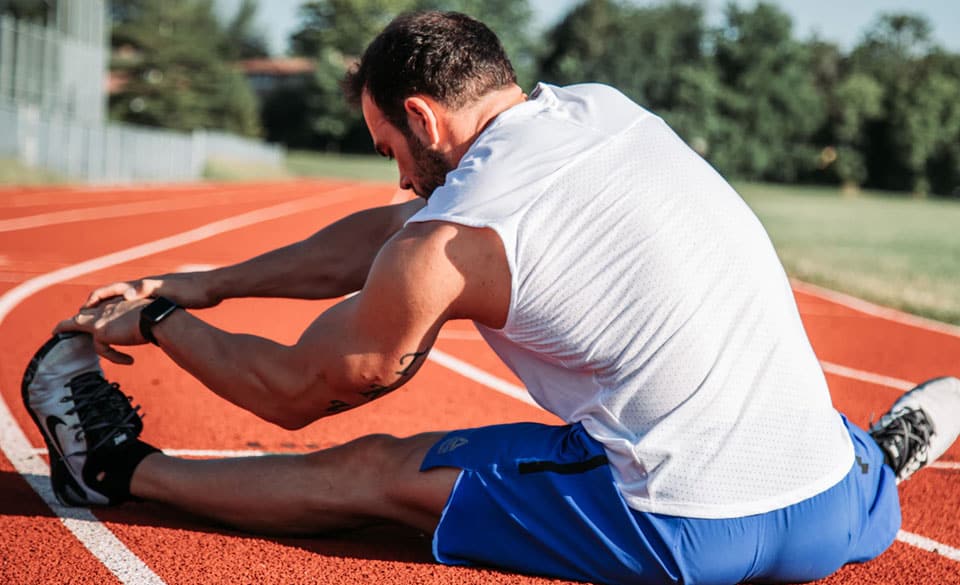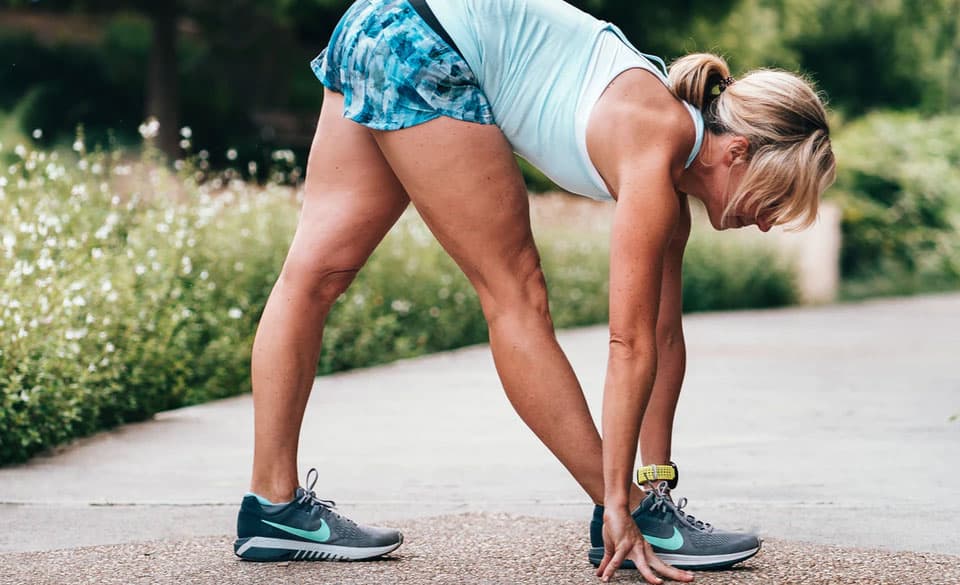
How To Prevent Running Injuries – UPDATED 2021 – Prevention And Fixes
Page Contents
So you decided to start running to stay fit and healthy a month ago, but now you are bedridden at home with running injuries. After months of recovery, you put on those running shoes again only to find yourself in the same situation a few weeks later.
This scenario may sound over the top to people who have just begun to run, but veteran runners have been through this cycle one too many times. “How do you avoid common running injuries?” – the question is as old as running itself. Isn’t it? Well, thanks to advances in modern science and our understanding of human physiology, certain common running injuries can now be avoided with proper care.
Runner’s Knee Injury – Patellofemoral Pain Syndrome (PFPS)
There is a reason why patellofemoral pain syndrome (PFPS) is popularly known as the runner’s knee – every other runner has suffered from it.
When you run too much, your knees are put under a lot of stress. This results in sharp and chronic pain. While the pain isn’t constant or permanent, it can haunt you even when you’re carrying out everyday tasks – such as climbing up a flight of stairs. Studies indicate that the disorder is more common among women than men, predominantly affecting younger age groups who occasionally run.
Causes
A tight hamstring or poorly maintained quadriceps are primary reasons for the runner’s knee. Having hamstrings that don’t flex enough can be damaging to your knees. Your knees are already under pressure when you are running and the added pressure of inflexible hamstrings can be too much to handle.
For your knees to function efficiently, the kneecaps or the patellas should be supported properly by your quadriceps. Poorly conditioned quadriceps fail to do so and often cause the kneecaps to move out of alignment – resulting in chronic pain.
Also, if you are well past your prime, your cartilages won’t be offering you the best shock absorption, which increases the occurrence of the disorder. So even a simple slow jog can turn out to be painful. Running uphill must be decreased, or avoided completely if possible.
Prevention & Fixes
When you have a history of suffering from the runner’s knee, your solitary goal should be to avoid putting extra pressure on your knees when you are running. The easiest way to do that is to run on softer surfaces. Pick shoes that offer enough cushioning and more importantly, don’t make it a point to outrun yourself. Bump up your goals slowly – a 5% increase in mileage every week is good enough. Make sure to stretch your hamstrings and warm up nicely before every running session. You could also start working on your quadriceps as a long term goal.
Plantar Fasciitis injury – Heel Pain
Being over-ambitious can cause Plantar Fasciitis. That is right – think back to the time when you pushed yourself to the limits. People who increase their mileage unreasonably are heavily susceptible to this problem. The plantar fascia is a connective tissue located in your heels and isn’t designed to handle too much overload in unfavourable circumstances.
Running long unreasonable marathons with shoes that don’t fit your feet well is the perfect way to damage your plantar fascia. Some runners often feel that more running equals better fitness. They couldn’t be more wrong. There is a limit to how much strain your body can handle. Once that threshold is reached, your body will start treating your marathon as a mere punishment.
Causes
Heel pain occurs when people train without warming up their calf muscles. It could also occur when a really grueling regime is followed to the letter without prior experience. In other words, mindless overworking will burn you and your heel muscles out.
What you need to come up with is a proper plan. It is not hard to know the limitations of your body. Your body will make them known to you. So every time your heel gives in, never push forward. It is a sign that your body can’t take it anymore. Slowing down is the smart thing to do.
Plantar Fasciitis can also be the result of poor genetics and biomechanical flaws. A flat foot with high arches is a perfect candidate for this condition. This, coupled with inappropriate footwear or running shoes contribute to almost 90% of the cases reported worldwide.
Prevention & Fixes
If neglected, Plantar Fasciitis can be a problem that is difficult to get rid of. The most important thing is to get shoes that fit you well. There should be ample space for your feet to completely stretch out and breathe. This way, you can be sure that your plantar fascia isn’t being subjected to any unnecessary pressure. Next, make it a habit to NOT overwork yourself.
An effective way to recover from this condition is to massage the plantar fascia and Achilles tendon. If the tissues are swollen, then placing an ice pack might help. The ice pack should be placed slowly on the swelling for about 5-10 minutes, and then the area should be massaged. Foot taping is another option. When all else fails, head down to your nearest podiatrist for an expert opinion.

Shin Splints – Lower Leg Pain
Shin splints refer to a complex type of lower leg pain that may occur on either side of the leg. The pain which occurs on the outside (front) part of the leg is termed as anterior shin splints and the pain which occurs on the inside (back) part of the leg is termed as medial shin splints. This condition is known to affect athletes from all sorts of sports and not just runners. A sudden change in the way athletes train themselves is said to be a contributing factor to the disorder. The term ‘sudden change’ can be attributed to just about anything, from diet to workout routines.
Causes
Scientists are yet to decide on what would constitute as a shin splint. There isn’t a firm answer yet and a torn muscle or even an inflammation in the lower leg currently qualify as a definition. A combination of factors supposedly contributes to the condition. For instance, a sudden change from a concrete track to a softer track without appropriate equipment can result in shin splints.
Runners often suffer from medial shin splints. Interestingly, the dominant leg of the runner is always the one which is involved. The anterior shin splints are much rarer and occur when there is a severe imbalance between the calf muscles and the muscles at the front of the leg.
Prevention & Fixes
If you’re experiencing shin splints, then you need to stop running immediately. Some runners experience only mild pain, but even in such cases, the overall training routine needs to be decreased in half. You need to view this down time as a means to rebuild your lower leg. For the first week or so, let your legs rest. Don’t indulge in any energy intensive activity. Once a week has passed by, you can slowly start your rehab.
Stretching exercises help a great deal. Muscles are best relaxed when you don’t train. Give them a break and treat them with an ice pack. Once you are comfortable, slowly stretch each muscle – one by one. If you have medial shin splints, then stretch your Achilles tendon. Otherwise, stretch your calves. Either way, you will gradually improve the condition of your muscles. Remember, rushing too fast or overworking yourself could be one of the causes too. So take it slow.
ITB (Iliotibial Band) Syndrome – Inflammation
Probably one of the most common running injuries in the world, the ITB syndrome refers to the inflammation of the iliotibial band ligament. This ligament attaches to the knee and is essential for joint movement. When inflamed, the movement of the knee becomes excruciatingly painful. Runners with this condition have been sidelined from the tracks for months. However, with caution and proper planning, the syndrome can be avoided.
Causes
You may be a victim of the ITB syndrome if you notice a swelling on your knee for extended periods of time. Any exercise or activity that compels the leg to turn inward repeatedly is the main cause for this condition. For instance, wearing uncomfortable shoes and running for too many miles can lead to the ITB syndrome. Or even running in the same direction on a particular track can contribute to the problem or aggravate current issues.
When the IT band comes near the knee, there is every chance that they may grind against each other. When they do, the band swells up causing pain and discomfort. The surprising part is that even veteran runners are hit by this problem every now and then. It is also worth noting that women are more susceptible to the syndrome than men.
Prevention & Fixes
Prevention is really straight forward – run less. The moment you experience pain around the knee area, stop running and relax. This may be a sign that your IT band is in trouble. Cut down on your goals and aim to run safe distances without exerting too much pressure on your knees. If you have the urge to run longer distances, do so only when you’ve given ample time for your knees and IT band to recover.
However, if your ITB has already experienced swelling, it’s best that you take a break from running. Try something else for a change maybe? Start with stretches, ice pack therapies and then slowly move to swimming or cycling. Once you feel you’ve worked on your knees, you can safely get back on the tracks.
Stress Fracture – Overdoing The Running
A tiny crack on the surface of the bone may occur as you gradually train harder over a course of a few months. This crack can be anywhere, from your lower leg to your heels. Although it’s not as common as the other disorders, it still remains a scary possibility for most runners out there. If you can’t seem to figure out what’s causing you pain despite cooling down and stretching your muscles, you might have a stress fracture on one of your bones.
Causes
It’s self-explanatory. Stress causes the fracture. A stress fracture need not necessarily be due to a minor fall – it could also happen when your bones aren’t strong enough to handle the workload you’re thrusting on them. When your body indulges in repetitive activity, it gets overworked.
Your body type may be at fault too. Certain types of bodies can’t handle the forces of walking or running. Hence stress fractures for such body types aren’t just occasional, they become the norm. This is a fundamental problem and fixing this would require proper nutrition and weight training. Once the body is supplied with enough nutrients and is accustomed to handling the weight, it becomes much more resistant to stress.
Prevention & Fixes
If you ever feel that you may have a stress fracture, head down to a local hospital for an x-ray scan without further delay. If you can’t treat pain even after months of calculated training, it’s best not to wait any longer. Sometimes, generic x-ray machines can’t detect stress fractures. In such cases, your doctor may refer you to a physician who specializes in treating athletes.
An important point to note here is that once you’ve had a stress fracture, you’re likely to have it again. The goal is to find out what went wrong. If your muscles have an inability to provide ample protection or shock absorption to your bones, then you would need to work on strength training to avoid further fractures.
The Bottom Line Of Running Injuries
Whether you’re a prospective runner who’s doing his research or someone who’s been laid off from thanks to one of the problems listed above. Running good miles is a hard task, and every runner is guilty of doing something wrong and hurting himself.
Many of you might have already figured this out – most of the common running injuries are all self-inflicted.
Lack of awareness coupled with bad equipment would hurt anyone in any sport, but the bottom line is pretty simple. Proper stretching, great equipment, and a well-planned fitness schedule should see to it that you don’t run into any of these obstacles.


Download Running the Mile for only 8usd
“A Know-all Short Report All About Long Distance Running”




